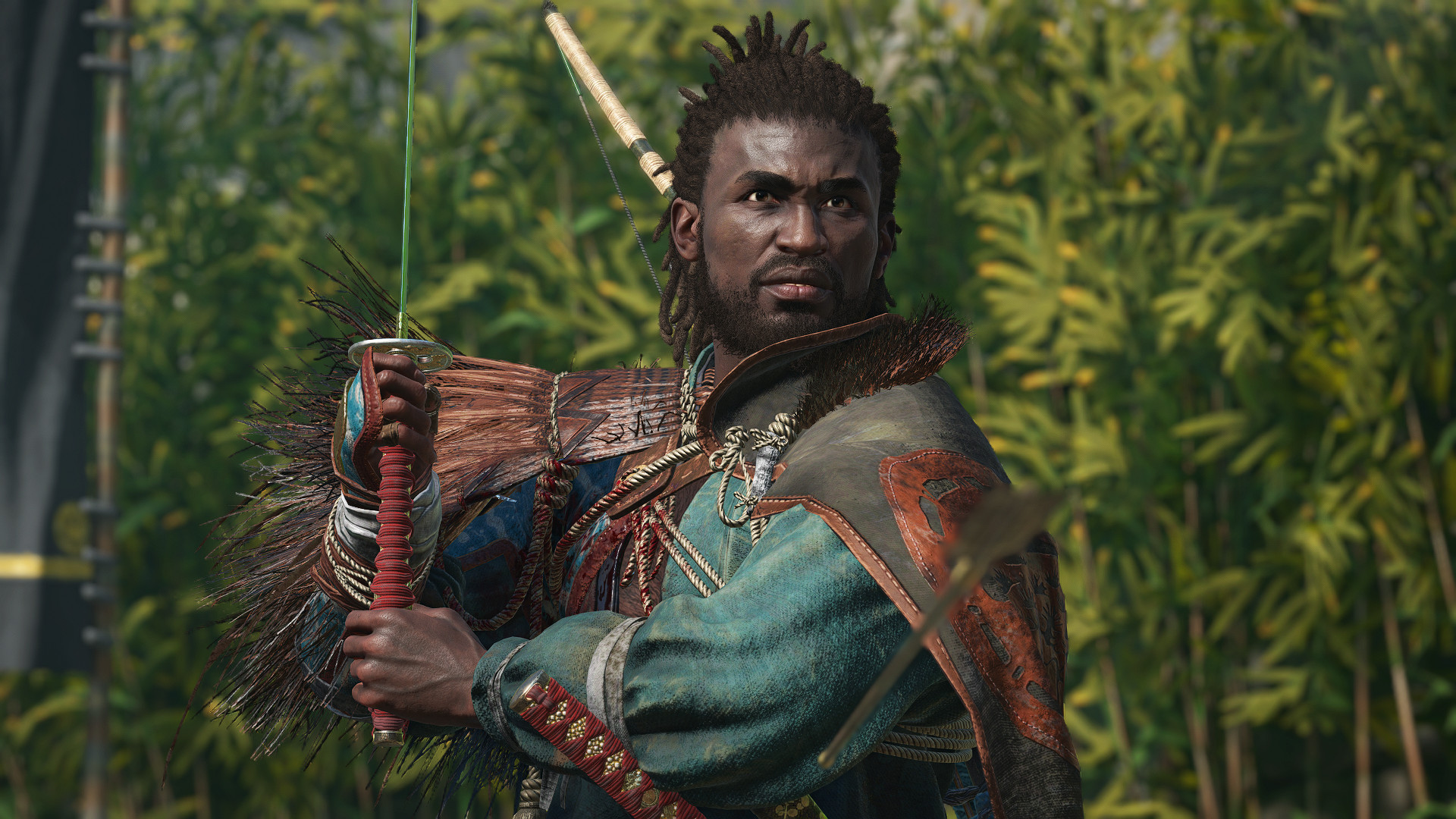Introduction: A New Era for Assassin’s Creed
The Assassin’s Creed franchise has long been a cornerstone of action-adventure gaming, blending stealth, exploration, and visceral combat across sprawling historical settings. With Assassin’s Creed Shadows, Ubisoft has taken the series to feudal Japan, a setting fans have clamored for over a decade. Released on March 20, 2025, the game has already made waves, not just for its breathtaking open-world rendition of Japan but for its revamped combat system, which has earned high praise from an unexpected source: Michael Douse, the publishing director of Baldur’s Gate 3, one of 2023’s most critically acclaimed RPGs. Douse’s endorsement, calling the combat the “best in years” for the series, has sparked excitement and curiosity among gamers. But what makes this combat system so special, and how does it redefine the Assassin’s Creed experience? Let’s dive into the heart of Shadows and explore why its combat is stealing the spotlight.

The Combat Renaissance: Tight, Deliberate, and Nostalgic
At the core of Assassin’s Creed Shadows is a combat system that feels both innovative and nostalgic, a balance that has resonated deeply with players and industry veterans alike. Unlike the RPG-heavy mechanics of recent entries like Origins, Odyssey, and Valhalla, which leaned into sprawling skill trees and MMO-like battles, Shadows returns to a more focused, counter-based system reminiscent of earlier Assassin’s Creed titles. This shift addresses a common critique of the newer games: their combat often felt floaty or overly complex, prioritizing stats over precision. In Shadows, Ubisoft has stripped back some of that bloat, delivering fights that feel “tight and deliberate,” as Douse noted on social media.
The combat revolves around a clear counter system, where timing and positioning are paramount. Players must read enemy movements, parry attacks, and strike with precision, evoking the satisfying rhythm of classic titles like Assassin’s Creed II or Brotherhood. This return to roots doesn’t mean the system is simplistic, however. Shadows introduces layers of depth through its dual protagonists, Yasuke and Naoe, each offering distinct combat styles that cater to different play preferences. Yasuke, a historical Black samurai serving under Oda Nobunaga, is a powerhouse, wielding heavy weapons like katanas and polearms to dominate foes with brute force. Naoe, a shinobi trained in stealth, favors agility, using lighter weapons like kunai and a chain blade to outmaneuver opponents. This duality ensures that combat remains varied, whether players are charging through castle gates or silently dispatching guards from the shadows.
Dual Protagonists, Dual Playstyles
The introduction of Yasuke and Naoe as playable characters is a game-changer for Assassin’s Creed Shadows. Their contrasting abilities not only enrich the narrative—set against the backdrop of Japan’s Sengoku period—but also transform how players approach combat. Yasuke’s style is direct and brutal, perfect for players who relish open confrontation. His animations are weighty, with each swing of his weapon carrying a sense of impact. For example, taking on multiple samurai in a castle courtyard feels cinematic, as Yasuke blocks, counters, and unleashes devastating finishers that showcase Ubisoft’s improved motion capture and cinematography.
Naoe, on the other hand, is the embodiment of finesse. Her combat is fluid and acrobatic, allowing players to weave through enemies, dodge attacks, and strike from unexpected angles. Her chain blade, a standout addition, lets her pull enemies closer or disarm them, adding a tactical layer to encounters. Naoe’s stealth-focused approach also integrates seamlessly with combat, enabling players to transition from silent takedowns to full-on skirmishes without breaking the flow. This versatility makes her a favorite for fans of the series’ traditional assassin fantasy, where stealth and combat are two sides of the same coin.
The ability to switch between Yasuke and Naoe during missions adds strategic depth. Some objectives favor Yasuke’s raw power, like storming fortified strongholds, while others reward Naoe’s stealth, such as infiltrating a heavily guarded temple. This dynamic keeps combat fresh, as players must adapt their tactics to the situation and protagonist. The game’s skill trees further enhance this system, allowing players to unlock new moves, combos, and abilities tailored to each character’s strengths, ensuring that combat evolves over the game’s 50+ hour runtime.
A Return to Stealth-Action Roots
While the combat has garnered headlines, it’s worth noting that Assassin’s Creed Shadows also refines the series’ stealth mechanics, which complement the fighting system. Naoe, in particular, shines here, with tools like a grapple hook, smoke bombs, and the ability to crawl through grass while prone—a rarity in modern stealth games outside the Metal Gear series. These mechanics make infiltrating dense, beautifully designed castles a highlight, as players must carefully navigate guard patrols and environmental obstacles. The combat system ties into this stealth loop, as players can choose to engage enemies head-on or thin their numbers silently before a fight. This interplay between stealth and combat is where Shadows feels like a true evolution of the franchise, recapturing the essence of what made early Assassin’s Creed games so compelling.
Industry Praise and Player Reception
Michael Douse’s praise carries significant weight, given his role in delivering Baldur’s Gate 3, a game lauded for its depth and polish. His comments reflect a broader sentiment among players and critics. On platforms like Steam, Shadows has achieved a “Very Positive” rating, with over 80% of thousands of user reviews praising its gameplay. The game’s concurrent player peak on Steam, surpassing 64,000, outstrips previous entries like Valhalla and Mirage, signaling strong community engagement. Within its first 24 hours, Shadows attracted over a million players across platforms, a testament to its appeal despite pre-launch controversies surrounding Yasuke’s inclusion and debates over historical accuracy.
These controversies, while vocal, haven’t overshadowed the game’s quality. Ubisoft’s decision to patch features like shrine destruction, which some criticized as disrespectful, shows responsiveness to player feedback. The studio’s focus on polishing the game during its delayed development period—originally planned for an earlier release—has paid off, with critics awarding an average score of 81 on OpenCritic. The open-world, with its stunning vistas of feudal Japan, and the game’s refined parkour system, particularly for Naoe, have also received acclaim, but it’s the combat that consistently stands out as a highlight.
Why the Combat Resonates
So, why has the combat in Assassin’s Creed Shadows struck such a chord? For one, it bridges the gap between the series’ past and present. Fans of the older games appreciate the return to a counter-focused system that rewards skill and timing, while newcomers enjoy the accessibility and spectacle of Yasuke and Naoe’s distinct styles. The system feels polished, with responsive controls and animations that make every encounter visually spectacular. Ubisoft’s collaboration with traditional Japanese composers and modern artists for the soundtrack further elevates these moments, turning battles into immersive, cinematic experiences.
Additionally, the combat system aligns with the game’s setting. Feudal Japan, with its samurai and shinobi, demands a balance of honor and deception, which Yasuke and Naoe embody. The counter system feels authentic to samurai duels, while Naoe’s agile strikes evoke the mythos of ninja warfare. This cultural resonance, combined with mechanical precision, makes the combat not just fun but thematically cohesive.
Challenges and Critiques
No game is without flaws, and Assassin’s Creed Shadows has faced some criticism. Some players find the main story disjointed, with a cast that doesn’t always leave a lasting impression. The open-world, while gorgeous, can feel bloated, with repetitive side quests that echo the series’ RPG era. These issues, however, don’t detract from the combat’s quality, which remains a standout feature. For players who prioritize gameplay over narrative, Shadows delivers in spades, offering a stealth-action buffet that’s hard to put down.
The Future of Assassin’s Creed
The success of Shadows’ combat system raises exciting questions about the franchise’s future. Will Ubisoft continue to refine this counter-based approach, or will it experiment with new mechanics in the next entry? The dual-protagonist formula has proven effective, suggesting that future games might explore similar dynamics. With Shadows being hailed as one of the series’ best entries since Black Flag or Assassin’s Creed II, Ubisoft has a strong foundation to build upon, potentially cementing the franchise’s place in the modern gaming landscape.
Conclusion: A Combat System Worth Celebrating
Assassin’s Creed Shadows is more than just a love letter to feudal Japan; it’s a bold step forward for a franchise that has continually evolved over nearly two decades. Its combat system, praised by Baldur’s Gate 3’s Michael Douse as the “best in years,” is a testament to Ubisoft’s ability to listen to fans and innovate within a beloved formula. By blending nostalgic counter mechanics with the fresh perspectives of Yasuke and Naoe, Shadows delivers a combat experience that’s both familiar and exhilarating. Whether you’re a longtime fan or a newcomer, the game’s tight, deliberate battles are sure to leave an impression. As players continue to explore its stunning world and master its mechanics, it’s clear why Assassin’s Creed Shadows is the talk of the gaming community—dive in and experience the revolution for yourself!





